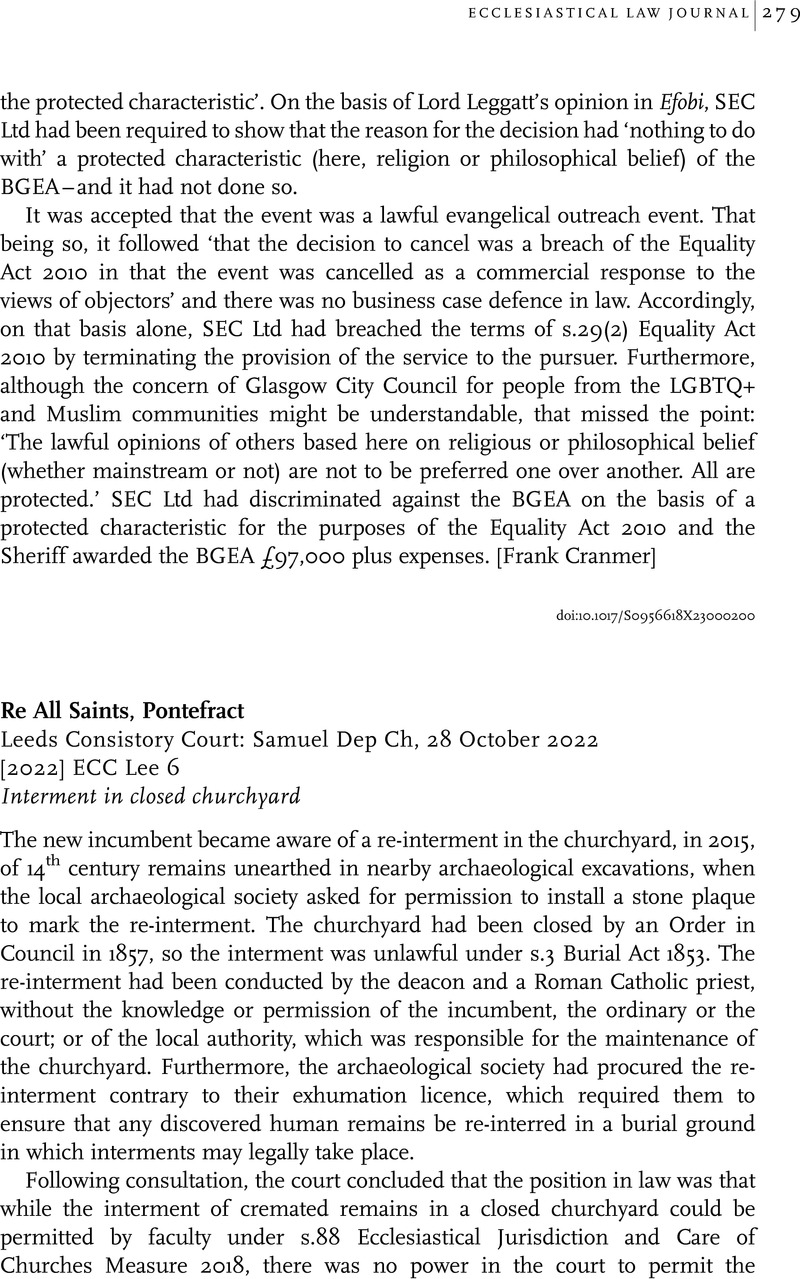No CrossRef data available.
Article contents
Re All Saints, Pontefract
Leeds Consistory Court: Samuel Dep Ch, 28 October 2022 [2022] ECC Lee 6 Interment in closed churchyard
Published online by Cambridge University Press: 28 April 2023
Abstract
An abstract is not available for this content so a preview has been provided. Please use the Get access link above for information on how to access this content.

- Type
- Case Notes
- Information
- Copyright
- Copyright © Ecclesiastical Law Society 2023



